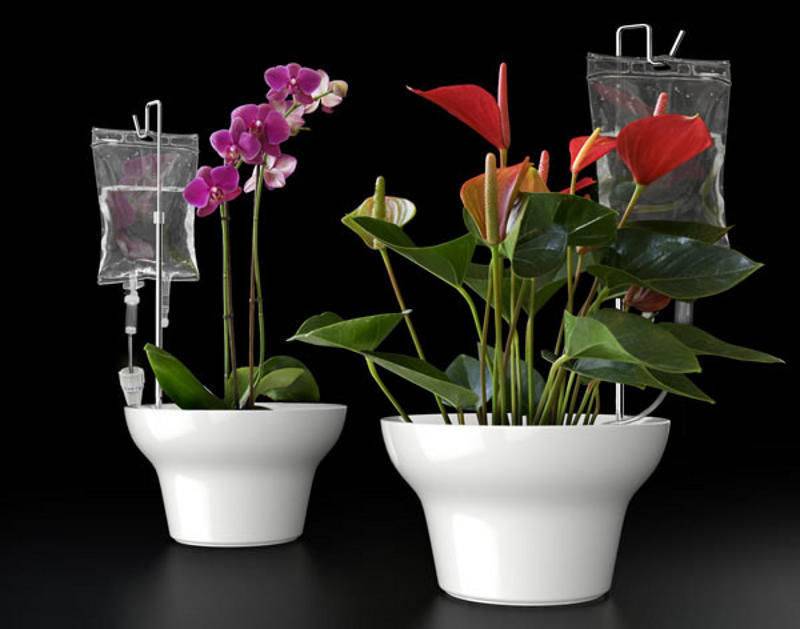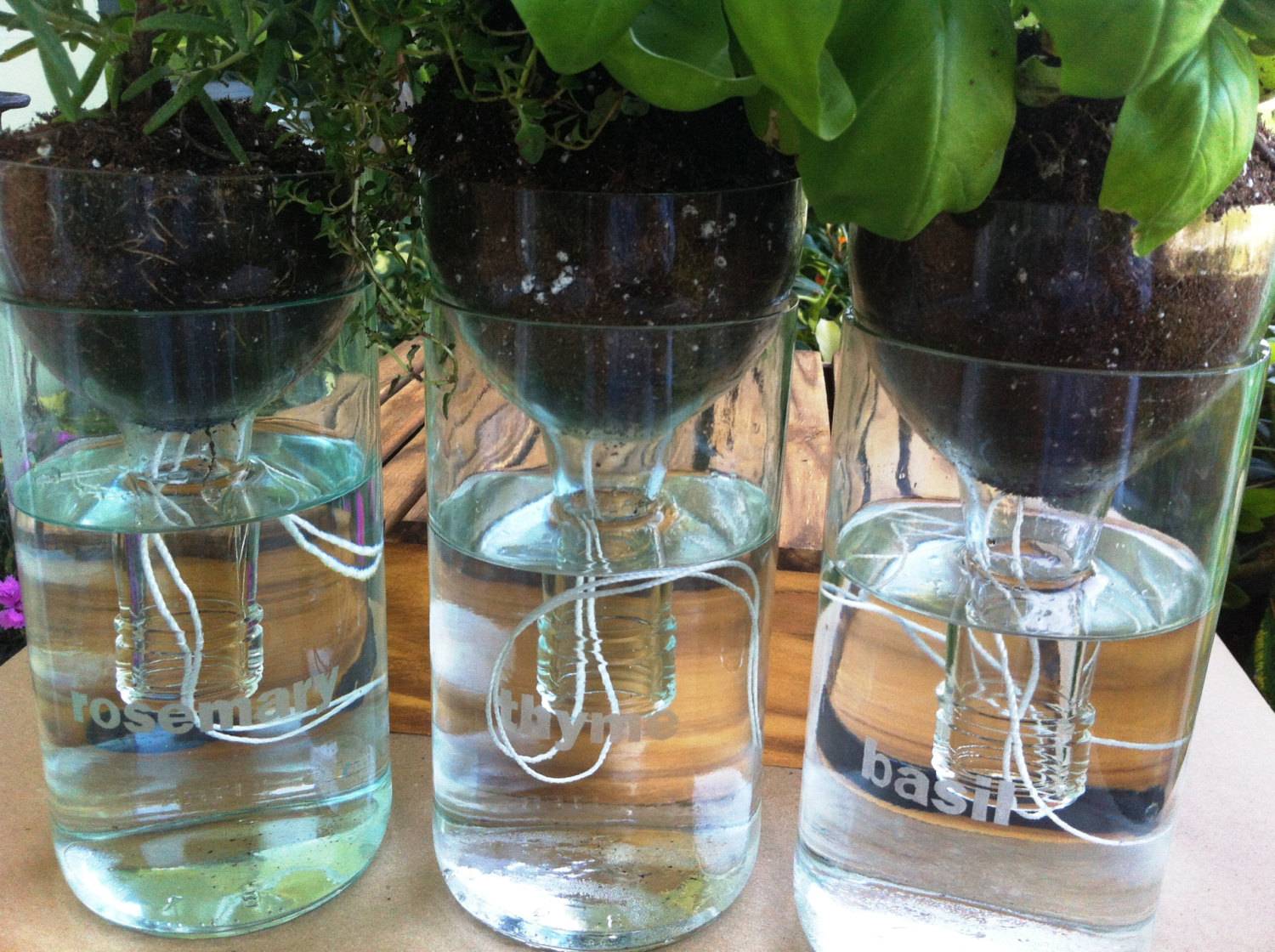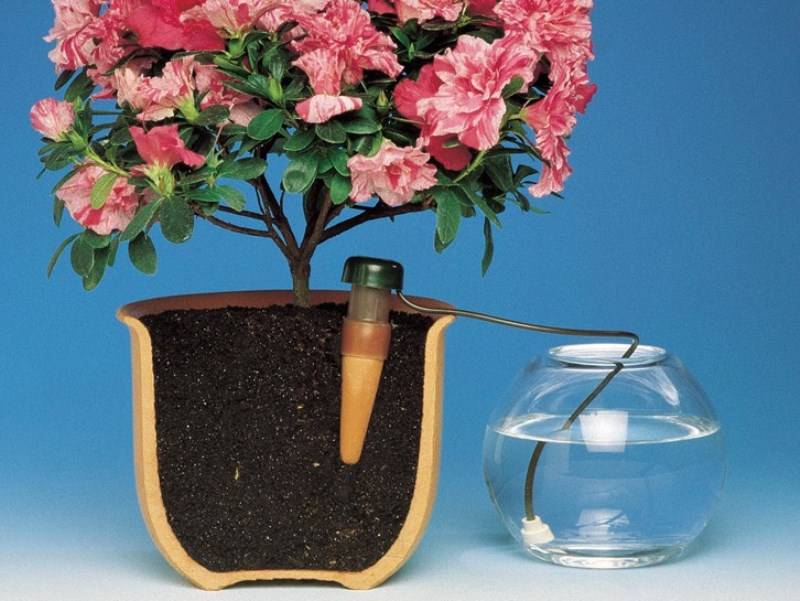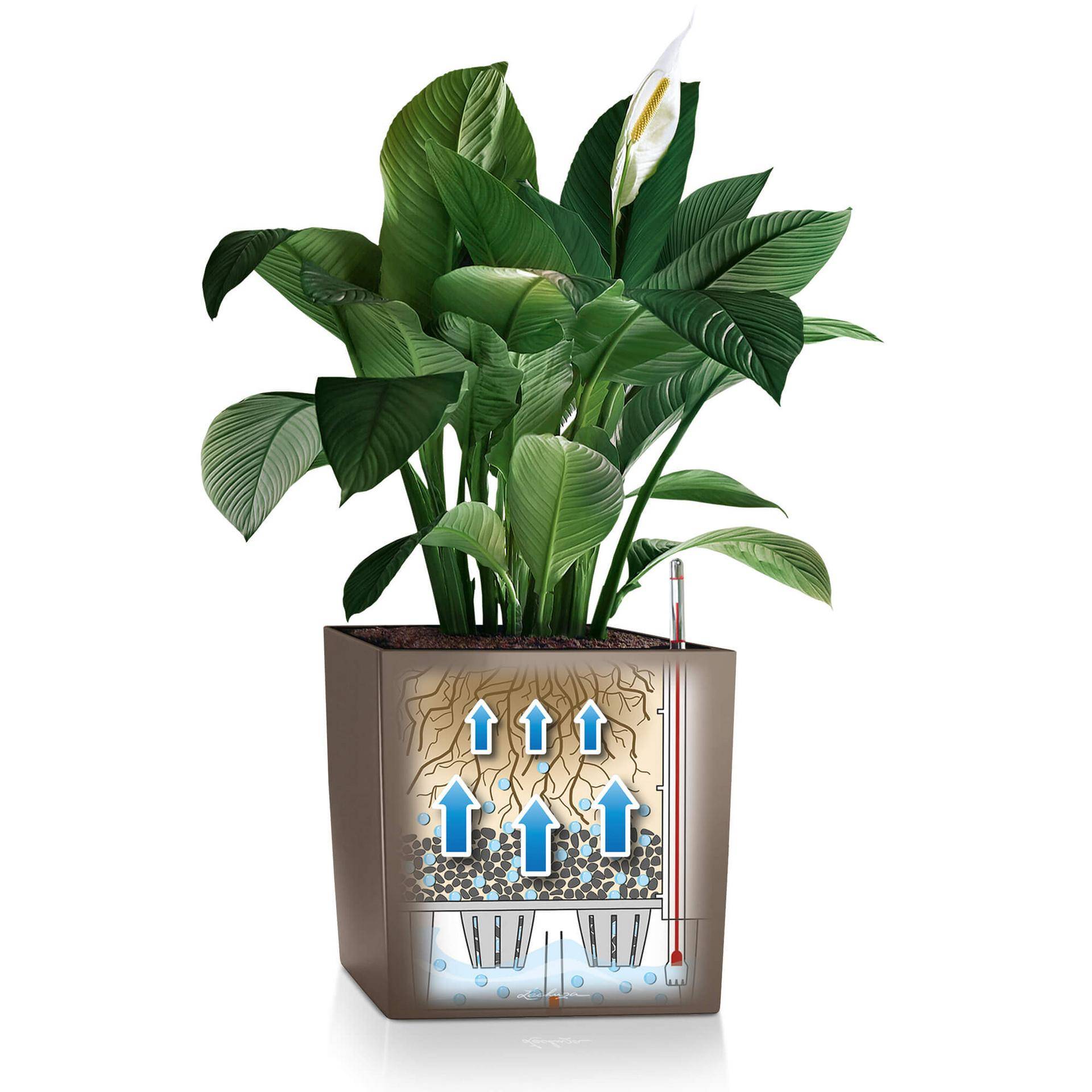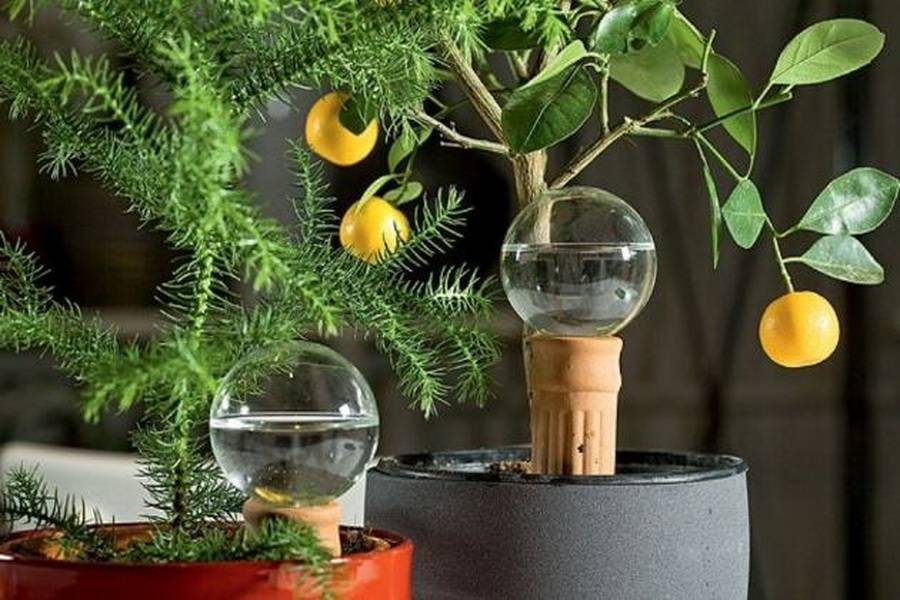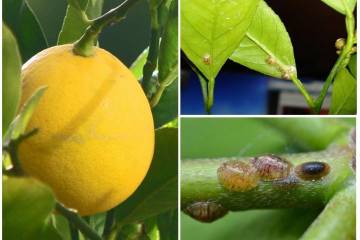DIY drip irrigation for indoor plants
Content:
Drip irrigation for indoor plants is the easiest way to care for flowers during a long absence of the owners of the house. With it, you can establish systematic watering and not worry about the condition of the flowers during the holidays, as irrigation occurs gradually and automatically. You can build a similar mechanism with your own hands; there are also automated devices with a timer for supplying liquids on sale.
How is drip irrigation for indoor plants
Automatic watering of indoor plants is a technical solution that allows you to water flowers much less often, but at the same time more efficiently. There are two ways: circulation of the same liquid, allowing excess moisture to drain into the sump, or an option that reduces the loss of liquid during evaporation after sprinkling.
Views:
- Upper. You can adjust the frequency of drops falling from above.
- Intrasoil. The liquid is fed directly into the soil of the pot using a dropper or funnel.
- Root. Moisture rises from the container under the pot to the top of the plant.
The irrigation system is carried out using medical droppers. For small flowers, the following are used: a container with water, a dropper and a tube that is inserted into the ground located in the pot. If the flowerpot is large, then several tubes are used at the same time.
When it becomes necessary to use a watering system for indoor plants
Timely irrigation of home flowers is an integral part of caring for them, which takes a considerable amount of time.
Automated fixtures have many benefits:
- Each plant needs its own approach. Given the variety of species, sometimes it is not remembered at what time or day it is worth carrying out the procedure. Having set up an automatic humidification system, you don't have to worry about it - it will do everything on its own.
- This technique will not contaminate the surface around the flowerpots and will supply water to each plant as needed.
- During the absence of the owners, especially for a long period, a properly configured system of plant moisture will best cope with the task of caring for flowers.
There are a great many devices for watering home flowers, and sometimes it is very difficult to decide on one thing. Despite the wide choice, they have one goal: to facilitate the solution of the task of caring for home flowers and free up time for other household chores.
How to make a device with your own hands
It is not necessary to buy automatic devices for sprinkling flowers, since drip irrigation for indoor plants can be done by hand. It does not take much time and effort, and its efficiency is no less than that of automated devices.
How to make a device from medical droppers
The medical drip irrigation system for home flowers is very simple. For the construction of the system, one dropper will be needed for one pot that requires humidification. Among other things, you will need a plastic water container with a volume of 5-7 liters. It depends on the number of pots.
Step by step plan:
- After purchase, each dropper must be tested for suitability by blowing.
- Pour the required amount of liquid into the container and place it above the level of the flower pots.
- Loosely tie the dropper tubes together without pinching them.
- Weight the tubing so that the drip tips do not float in the water.
- In a container of water, place the structure of the fastened ends, and place the other ends of the tubes in each pot.
- Adjust the irrigation speed using the screw clamps on the tubes.
Drip irrigation from a plastic bottle
For this purpose, you will need a plastic bottle with a lid and a penknife.
Procedure:
- A hole is made in the lid through which liquid will ooze.
- The cap is screwed onto the neck of the bottle.
- The bottom of the container is cut off and inserted with the neck down into the ground.
- Liquid is poured into the container.
From time to time it is necessary to add water, fill the structure, and observe the irrigation rate: if the water leaves too quickly, it is worth changing the size of the hole in the lid.
It is also possible to make a "wick" irrigation system from the bottle. For this you will need:
- lace or any synthetic material from which the wick will be twisted;
- plastic bottle;
- peg for fixing the wick in the flowerpot.
What needs to be done:
- A wick is twisted from an available synthetic material.
- Water is poured into the bottom cut off by the bottle.
- The end of the twisted lace is immersed in the liquid.
- The other tip is fixed in a flower pot.
- A container with water is placed under the plant.
It is enough to make one of the devices and test it on house plants to appreciate all the convenience of this approach.
Ready systems
If there is no time to make irrigation devices, ready-made systems sold in special stores come to the rescue:
- pots with automatic watering;
- micro-drip sprinklers;
- ceramic cones.
Ceramic cones
Ceramic cones are the simplest humidification design. At the base of the cone there is a small reservoir for liquid, which allows the soil to be moistened by dripping, and not allowing it to dry out. The same nozzles are sold for bottles, the amount of water in which can provide the plant with moisture for a whole month.
Pots with automatic watering
It is a rather simple structure, which is a system of vessels, in one of which there is a certain supply of liquid, and in the others there are plants. Moistening with this method occurs through the soil.
Automatic systems
Such systems are different in design and configuration.
The most common:
- A cone-shaped container with liquid is installed in a pot and connected under the planter with a tube with a water level indicator .;
- With a separating barrier - tube-shaped indicator with divisions. From these marks, you can determine the level of fullness. The system also includes a water reservoir through which it enters the bottom of the pot.
For flowers with small roots, another irrigation method is suitable:
- automatic sprinklers,
- hydrogel,
- granular clay,
- capillary mats.
All of these devices are sold freely in specialized stores.
The choice of autowatering mainly depends on the number of flowers and what kind of flowers they require care.It is better to stop your choice on ready-made micro-irrigation systems that are connected to the water supply system or have their own main reservoir for liquid.
Self-made irrigation systems will help you save a good amount of money. The only condition: before leaving, you need to check their work and efficiency.
